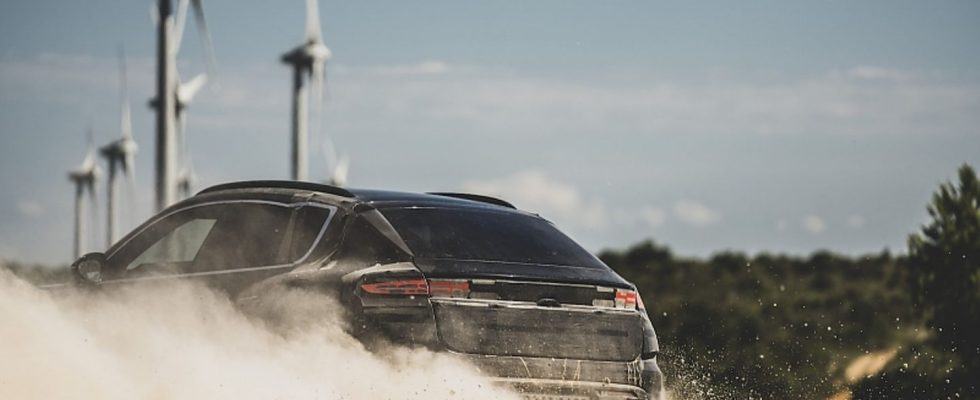Technology: testing Porsche Macan E
On quiet feet
Porsche Macan E 2024
© press-inform – the press office
The Porsche Taycan was only the first product, as the electric Macan is set to increase volumes for the sports car manufacturer from Stuttgart starting next year. We have already been on the road with the next generation of Macan – not always whisper-quiet.
In the new Porsche Macan, the prismatic cells in the battery, which are grouped into twelve modules, have a capacity of around 100 kWh. In the top model of the Porsche Macan EV, they will feed a 450 kW / 612 hp drivetrain that is capable of generating more than 1,000 Nm of torque and covering a distance of more than 500 kilometers until the next charging stop. The top model Macan Turbo goes from standstill to 100 km/h in under four seconds and has a top speed of over 250 km/h. The two electric motors enable all-wheel control and a fully variable and – depending on the selected driving program and the respective driving situation – torque distribution between the front and rear axles. The top version is equipped with a variable electronically controlled rear axle differential. Robert Meier, head of the Macan product line: “The torque distribution will vary depending on the drive mode selected and also depending on the driving style, but the rear engine will always be the dominant one to ensure the rear-wheel drive handling that we value so much at Porsche.”
The electric Macan impressed the first test drives on the Californian coast, especially at high speeds. The way the crossover performed on winding roads, it will probably become the electric compact SUV with the best road holding in the world. The roll control is excellent, it steers precisely and quickly even in the tightest corners and provides excellent steering. Due to the lower center of gravity, all of this dynamic is implemented without active roll stabilization, which is only available in the higher-class Cayenne.
While the Audi and Porsche teams spent the first three years of development together, the final test phase is about final prototype tuning and the respective vehicle applications. The electric Macan has a revised double wishbone axle with an offset spring strut level in the front axle. The rear multi-link axle is connected to the body via an elastically mounted subframe, while the rear electric drive unit is attached directly to the structure at four points. Depending on customer requirements, there is an option of an air or steel spring. A new two-valve shock absorber is intended to ensure that the coordination in the individual driving modes differs more clearly from one another. Depending on the speed, the ground clearance can be adjusted with the air suspension to improve comfort, handling or aerodynamics for more range. Also new in the upcoming electric Macan: rear-axle steering. Ingo Albers, responsible for chassis development at Porsche: “As Porsche, we have to ensure that our cars have the best handling on the market. So we decided on a limited wheel turn of one degree dynamically, while statically they can turn up to five degrees.”
There is also progress in reloading. If the charging station uses 400-volt technology, the Macan uses so-called “bank charging” for the first time, in which corresponding high-voltage switches in the battery are switched before the charging process. This turns the 800-volt battery into two batteries, each with 400 volts Rated voltage, which can be charged in parallel at a 400-volt charging station without an additional booster. If necessary, the charging states of the two battery halves are first equalized before they are charged simultaneously. Apart from the 800-volt system voltage, the electric Macan Only permanently excited synchronous electric motors are used. In this design, the rotor of the AC motor is equipped with permanent magnets, which generate a permanent magnetic field in the E-module. Compared to asynchronous motors, PSM deliver higher power and torque densities, higher efficiency and better reproducibility of the power output An important development in the Macan’s power electronics involves the use of silicon carbide instead of pure silicon as the semiconductor material in the pulse inverter on the rear axle, which helps reduce switching losses and enables higher switching frequencies.
The driver doesn’t notice anything. Things look different with the acoustics. Michael Klaus, responsible for acoustics, explains that “at Porsche we prefer to recreate the sound of a sports car rather than that of a space shuttle, because we didn’t become what we are by flying to the moon.” There is one Similar sound to the Taycan with a little more bass and masculine frequencies. There are still a few details to be done before the electric Macan rolls out to dealers in the first half of next year. But customers can look forward to a lot of dynamism and driving fun.

